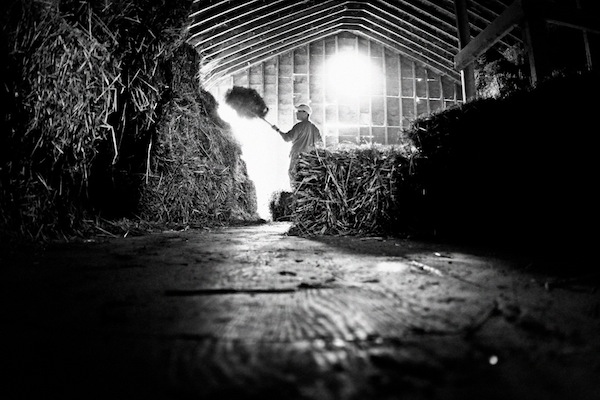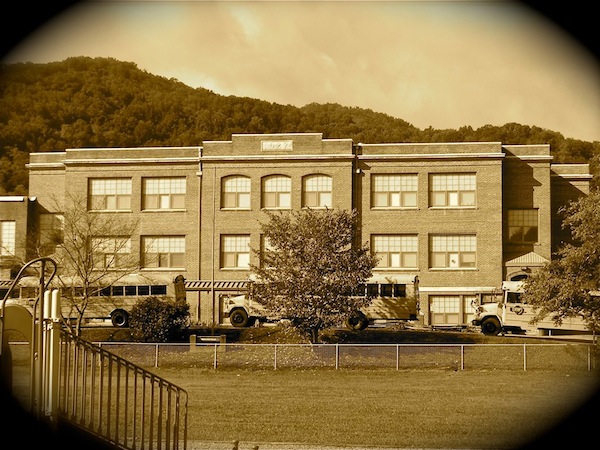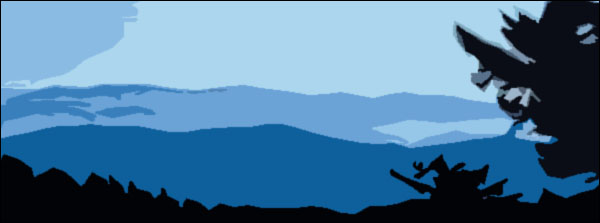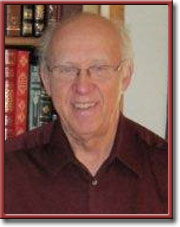More Boyhood Tales from The Great Blue Ridge Mountains
“As done in my early years, harvesting hay meant labor intensive work, especially when time came to stack it. Our haying methods could have provided some 20th century artist a scene almost exactly like that painted by Pieter Brueghel in 16th century Flanders, the exception being the use of a mowing machine and a hay rake to gather the cured hay into windrows.” John Idol, from Deep Gap Days: A Crazy-Quilt Narrative of My Boyhood in the Blue Ridge Mountains.
Out to Pastoral
By John Idol
BURLINGTON North Carolina—(Weekly Hubris)—12/3/2012—
Harvesting Hay and Other Crops

As done in my early years, harvesting hay meant labor intensive work, especially when time came to stack it. Our haying methods could have provided some 20th century artist a scene almost exactly like that painted by Pieter Brueghel in 16th century Flanders, the exception being the use of a mowing machine and a hay rake to gather the cured hay into windrows.
Part of the crew worked down the windrows to build small mounds of hay for crew members who ran long poles some 12 or 15 feet long under the mounds and then lifted them and walked slowly to the stack where another crew flung the hay to a stacker. A stumble or loss of grip spelled nothing but trouble, for the mound of hay being carried spread apart as it fell to the turf and had to be pitch-forked into a pile again.
Jason Moretz and his family favored using poles, but others in the area more often piled hay onto a sled and dragged loads of it to the stacking crew. Jason’s method was faster, especially if he could find enough boy-power to man two or three pairs of poles. His method enabled the stacking crew to continue their work without having to wait for a sled-load of hay to arrive.
With experience gained by stacking hay for Rufus and Lane, I avoided heavy lifting by taking a place at the stack-pole and building a stack that would shed water and thus prevent rotting. Jason and Jake fed forks of hay to me from the mounds carried in by Jim and Bill or other teams of pole-bearers. My job left my sweat-drenched body covered in dust and particles of hay. I was the embodiment of Johnny Hayseed. We Idol brothers were hired to help other neighbors along US 421: Cliff Ray, R. W. (Short) Clawson, and Joe Coffey. Eventually, with the coming of tractors and bailers, stackers and pole-bearers were no longer needed. If a job came along in the hay season, it was to load
bails of hay onto a tractor-drawn wagon or truck and take them to hay-lofts. (Harvesting hay in rectangular bails is now passé; giant rolls of hay lie alongside fence rows and are fork-lifted to spots were cattle are fed.)
Deep Gap farms were small and consequently without those wide expanses of land in the Mid- and Upper West for waves of golden grain. Yet, a few farmers had fields of wheat, oat, and buckwheat. A few of them, Rufus and Lane among them, swung cradle scythes to harvest grain, gathering the stalks thus cut and passing them on to me or one of my brothers to bind together with a stalk or two and then pack into a shock for drying. Other farmers owning tractors mowed their grain down to the ground and then gathered it into shocks.
The threshing season began in early autumn. Someone owning a threshing machine scheduled a day or more of threshing. A crew had to be rounded up to help haul shocks to the thresher and stack the stalks shaken free of their heads of grain. One or more members of the crew collected bags of grain and piled them onto waiting wagons or trucks. One of the customs of threshing day was to have lunch on the farm where the threshing crew was working. That usually meant getting to eat someone else’s cooking or drink someone else’s canned grape juice or springhouse-cooled lemonade. Since threshing crews, everyone knew, reveled in their ability to put away belly-timber, tables stacked with good eats greeted them as they dried their freshly washed hands and faces and took a seat at the table of Farmer X’s wife, be she Greene, Watson, or Idol.
The size of the crew dictated eating in shifts. A prudent hostess learned never to put everything she’d prepared on the table for the first shift. Threshers were hardy eaters and gobbled up everything in sight.
Stacks of wheat or oat straw often ended up as bedding in stables, but a common use for straw was stuffing for ticks (or mattresses). Annie and other housewives in Deep Gap usually went to Dick Watson’s farm to refill freshly washed ticks.
Pulling up beside a stack of wheat straw with sled drawn by our ever-present helpmate, Annie and sons stuffed four or five ticks as tightly as they could, settled with Dick on a price, and headed back up 421 to our house, a little over a quarter of a mile away. The plump ticks were carried to our several beds, the odor of meadows still rising from them. For the first night or so of their use, they showed some firmness.
After that, the straws collectively collapsed and were no more comfortable than the slats beneath the ticks. And the smell of meadows soon gave way to that of urine, for there were bed-wetters among us. Those flattened, odiferous straws sent us back frequently to Dick Watson’s straw stack to re-stuff our ticks.
Unlike families in the western section of Watauga County, few farmers in Deep Gap raised tobacco. Lloyd Watson and Murray Brown had allotments and grew burley tobacco year after year. Their barns were large enough to hang the tobacco for drying, and the smallness of other barns in Deep Gap may well have been the reason why so few farmers attempted to raise the most profitable cash crop in the state. Finding work in a tobacco patch was rare. Only in brother Bill’s and Joe’s adult years did any of the Idol boys make any appreciable money from tobacco. That came about when they undertook sharecropping on the Browns’ allotment. Bill also grew tobacco for a couple of years on the allotment of his father-in-law. The only time I helped in a tobacco patch came in my adult years as well when I pulled suckers from one of Bill’s crops. Nasty, hand-staining work!
Almost everyone alongside the highway kept a garden. Vegetable and flower both. The typical vegetable garden had onions, lettuce, beans, peas, white potatoes, sweet corn, carrots, beets, squash, tomatoes, cabbage, and cucumbers. A few families tried growing okra, none too successfully, probably because the plant seemed to like hotter weather than Deep Gap offered. Strawberry patches could be found in some gardens as well, but most often strawberries had an area to themselves.
Beating back weeds, fighting insects, gathering, preparing for the table or for canning demanded work, but it was work that had built-in rewards. There’s nothing so tasty as a tender young cucumber plucked from the vine and popped into a hungry mouth or a red-ripe cherry tomato given the same treatment. No salt, no pepper, not even washed, just warmed by the sun, sprinkled with dew, and bursting with flavor. Now, that’s what I call “good eatin’!” Besides, we all expected to eat a peck of dirt before we died. That was folk wisdom we didn’t doubt. So why wait to wash these garden goodies?
Deep Gap Elementary School

Built on property given to the Watauga County Board of Education by Jerry, Deep Gap Elementary School resembled a squat, stout U. On either side of the façade, a classroom protruded beyond a porch that ran between. The entrance opened on a short hall. Immediately in front of the hall was an auditorium with seating for 200 or more pupils. A small stage ran along the right side, sitting between two doors, and projecting about ten feet into the auditorium. Embracing the auditorium were six classrooms, three each right and left, two small coat closets to the right of the hall, and a room that might have been meant for a toilet/washroom. Since the building was to get inside plumbing only after one of the classrooms on the right was converted into a kitchen/dining room, the school acked restroom facilities. More about that later.
Depending on enrollment, each room housed one class, though some doubling did occur from time to time. Putting two classes in one room became the customary practice after smaller schools were closed in Stoney Fork and Elk. These moves of consolidation piled students from the eastern part of Watauga County into one school, one already filled to capacity.
The consolidation ended one of the improvements that I most enjoyed, the addition of a small library when a portion of the front porch was enclosed. That welcome addition lasted only one year, for a need for an extra classroom led to closing the library and stacking its book collection along the walls of a coat closet. Except for my first year, I was in rooms with two classes, one supposed to study while the other received instruction or recited.
The date of my birth, October 28, was beyond the cut-off point for students entering the first grade. Annie talked to the principal and to the first grade teacher, Cousin Lee Moretz, and they agreed to allow me to enroll on a trial basis. I could attend if I showed myself ready. I didn’t. On the first or second day I peed in my pants. I wiggled and squirmed as long as I could, but recess just wouldn’t come. I squeezed my legs together, flushed warmly and fought back tears. But soon not just tears were flowing. I wet not just my britches but the floor under my chair. No one had told me about asking to be excused, and even if I had known of such an escape from humiliation I was too bashful to put my hand up and ask to be excused. I hoped no one had seen the puddle I’d made.
Cousin Lee told Annie, “Johnny’s not ready.” I was, however, ready to learn, and Annie was obliging enough to mentor me. She paused long enough in her household chores to teach me everything a first grader should know. The first grade the next year, under Mrs. Wellborn, proved a snap. My bladder having grown more obedient to my will, I enjoyed my year under her tutelage. Except for the day, as I’ve elsewhere related, I overslept and got to class late, my punishment being that I had to sing “Good morning to you” alone, sotto voce, I assure you.
Happily, I started first grade before the era of Dick, Jane, and Spot. I can’t recall now the title of our reader, but I do vividly remember two of my favorite books, one narrating the scary tale of Little Black Sambo, the other the stages by which some Chinese kids got suited up to do a dragon dance. I read both of these repeatedly, never thinking about race or nationality. All I knew was that Sambo was cut from heroic cloth and that those Chinese children lived in a much more exciting and colorful world than I did. How wonderful, I thought, to run as swiftly as Sambo did; how marvelous to don a part of a dragon’s outfit and dance joyfully in the street. What did I know about race anyway? Deep Gap was 100 percent WASP, a mix of English, Scottish, German, and Welsh stock. The closest African- American family lived in neighboring Ashe County and went to a segregated school.
All I knew was that Sambo would have been devoured if he had been less swift. I didn’t know for years and years that my enjoyment of his gift for survival had been politically incorrect. Just as I didn’t know that the humanity, tolerance, and deep-seated sense of fairness of Huck Finn merited keeping Mark Twain’s masterpiece out of American classrooms. Would that all Americans, or for that matter people everywhere, could see beyond contemporary labels and grasp a writer’s true intents. People on soapboxes too often stand on narrow, thin planks.
Among my first-grade classmates, two, Bobby Miller and Bill Moretz, would be groomsmen in my wedding, but the lad I chose for my closest buddy that first year was a dark-haired, brown-eyed boy named Alfred Cole. He didn’t return the next year, when the class moved to be charges of Miss Farthing, who had the task of teaching both second and third graders. B. L. Greene, a distant cousin who’d been lodged in a tree overnight during the flood of August 1940, became my buddy after he was assigned to the second grade. He’d been attending a small school in Stoney Fork. When the Red Cross built a home on acreage once belonging to one of the heirs of Jerry Watson, B. L. was a neighbor.
His horrendous experience in a landslide that destroyed his home and claimed the lives of his father and two sisters made him the subject/object of much interest. How had he felt when his house was swept away and he was caught up in the raging waters? Did he think he was going to drown? How did his mom and older brother escape the fate of his father and sisters? Who found him lodged in a tree? How did he like living in Deep Gap? Not much of a talker when he came among us, he told us very little. Insensitive as we were, we nonetheless realized that his suffering ran deep. In time, he joined us in our games at recess and often walked to and from school with the Idol brothers, for his house stood between ours and the school. B. L. will appear again in my narrative, as friend and temporary foe.
The event from my second year at Deep Gap Elementary School that I best remember is learning the multiplication table. That came about as I listened to Miss Farthing drill her third-graders on it. As one after another frightened or bright scholar recited the table for her, I finally saw how much better multiplication was to the time-consuming task of adding columns of numbers. Here was something worth knowing, I decided, and kicked into gear my first dedicated attempt at rote learning. But what would be left for me to master in the third grade if I got the multiplication down pat in the second? I didn’t foresee a romantic interlude that would take my mind off studies. In the third grade, I fell in love. The object of my affection, Irene Gould, never knew.
Goodnight, Irene

Irene’s black hair fell below her shoulders, a fitting complement to her lively brown eyes, olive complexion, and dark-hued lips. Although I didn’t know it at the time, she looked like one of those sensuous attendant girls appearing in religious scenes by Renaissance Italian painters depicting Mary or Elizabeth. In short, she was strikingly beautiful. I was smitten and wanted, somehow, her to know it.
Her desk, in front of mine, gave me a chance to admire her tresses and to lift them from my own desk when they fell across it. For a frontal view of her, I had to wait until I was forced to go to the blackboard to prove my [in]abilities in math. Then, on the way back to my seat, I could glance at her face as I slowly returned. Not bold enough to look straight into her eyes, I tried to appear to be staring at something or someone in back of her.
Shy as I was, I knew I’d have to come up with a way to impress her without being obvious about my goal. I hit upon the idea of giving her an apple, of which we had plenty. But I wouldn’t bring one every day, nor would she be the only girl in class to receive this gift. I gave apples to other girls out of fear that they’d see I was stricken with love for Irene and they’d soon start teasing me: “Johnny’s got a girl, Johnny’s got a girl!”
Had they compared their apples to the one I bestowed on Irene, they could have spotted her as my favorite, but I suppose girls aged eight or nine don’t pause to compare such simple gifts as apples. Or maybe they do. Blind as I was in this first adventure in love, I failed to consider I might have a rival for her affection. I just knew Irene would be mine if I could think of some way to tell her of my feelings.
The arrival of a man selling wares along US 421 unexpectedly provided a possible solution. A peddler dismounted and carried his wares into our house, spreading before us on the kitchen table leather goods and plastic rings made by prisoners, wallets with designs of birds and animals and rings of various sizes having words or slogans beneath clear windows in the position where a stone would usually be found. For a dime or quarter, a ring bearing a name, phrase, or slogan of the customer’s choice could be purchased.
As the peddler arranged his display of rings for us to see, I spotted something to serve my needs. In one of the small rings, the dime size, I read “I LOVE.” Placed on Irene’s delicate hand, it would say what I lacked the courage to utter outright. I told Lane I wanted that ring. He dug in his pocket and came up with a dime. I quickly handed it to the peddler, knowing as I did that I’d bought instant happiness.
Well, perhaps not instant, as I realized when the sun arose the next morning, for the sun shone on the same bashful boy who dared not look straight into Irene’s eyes or pass little love notes to her in class. Nonetheless, I created two presentation scenarios as I ate breakfast. I would, I first imagined, wrap the ring in a piece of paper with my name on it and hand it to Irene, asking her as she opened the packet and looked at its contents if she’d like to try on the ring. If she chose to slip in on, I’d then say, “You may have it.” I backed off that approach since it would mean mustering courage I didn’t have.
A second plan, one that eliminated most potential witnesses to the presentation, would take me to school early and afford a chance to greet Irene as she left the bus and walked toward our classroom. When I came to the schoolhouse, nervous with anticipation, knees knocking from shyness, I had to await the arrival of Irene’s bus. Meanwhile, most of the other busses had discharged their students, several of them my classmates.
Everywhere I looked I saw someone who would see me if I gave Irene the ring when her bus pulled in. I knew that my happiness would have to be postponed, that some other plan would have to be devised. But how about that first plan? Wouldn’t it work? It had the distinct advantage of letting me carry it out secretly. I ran to my desk and began writing my name on a sheet of notebook paper to use as a wrapper.
I hadn’t finished that job when my rival came to my desk and started talking to me. “Johnny, did a man come by your house yesterday, a man selling pocketbooks and rings?”
“Yes,” I answered.
“Look what I bought,” he said, taking a new wallet from his hip pocket.
My rival’s father, much better off financially than my own, could afford the dollar that wallets cost.
“What’d you get?” my rival asked.
At first I didn’t want to tell him that I’d bought anything, but I didn’t want him to think my dad could afford nothing. Reluctantly, I held out my left hand and showed him the plastic ring on my little finger.
“Let me try in on,” he said.
I slipped the ring off and handed it to him. His finger was just the size of mine.
“Do you mind if I wear it for awhile?” he asked. Just then the bell rang to start morning classes and my rival rushed to take his seat.
At recess, he leapt back to my desk. “Listen, Johnny, I’d like to buy this ring.”
“No,” I said, “I don’t want to sell it.”
“How much did you pay for it?”
“Dime.”
“Give you a quarter and a bar of candy.”
“Can’t sell it.”
“You can buy yourself two dime rings or one of the bigger ones.”
“No, I like this one.”
“Didn’t he have more like it?”
“Yes.”
“Well, you can buy another and have some money left over.”
I began to waver, but for a reason my rival couldn’t suspect. I could have a ring for Irene and one for myself, both silently and visibly declaring our love for each other. I was too simple to think that someone I loved could ever love anyone else.
“Come on, Johnny, sell it to me”
“Don’t want to.”
“Hadn’t you rather have two rings than one?”
That query did it. I sold the ring, thinking I could find the peddler somewhere in the neighborhood. I might have to walk or run a couple of miles to catch him, but I would have two rings.
The remaining hours of the school day crawled by at a turtle’s pace. At last, I was free to chase down the peddler. He was not to be found. After spending the night at a neighbor’s house, he had hitched up his buggy and headed off down the highway to North Wilkesboro, a neighbor told me.
Lane did not own a car or pickup at that time. I had no way of following the peddler even if I had given Dad a good explanation of how I came to possess a quarter. I was thwarted and knew it. Dejected, I crept to school the next morning, slid into my seat and stared at Irene’s long tresses. Then I noticed, as she lifted the lid of her desk to get the book needed for the morning’s first lesson, a ring on her finger, something she hadn’t worn the day before. I could see something printed under the clear dome but not plainly enough to make out what it said. But I was sure that the ring looked exactly like the one I’d sold my rival.
It was the ring I’d bargained away. At recess, my rival rushed over to Irene’s desk, took hold of the hand bearing the ring, and said, “Look what I gave Irene.” New to the rites and mysteries of puppy love, he seemed merely to want me to help him celebrate his act of making someone happy. She looked happy and my rival looked happy.
How long she wore the ring, I don’t know, for I couldn’t bear to look at her hand. She did not return to Deep Gap Elementary the next year. Nor did she ever appear in my dreams. My rival and I, afterwards, wondered what happened to her. Like a rare butterfly, she fluttered into and out of our lives. Goodnight, Irene.
![]()
Note: All images illustrating this excerpt courtesy of Flickr. Photo One: by Fellowship of the Rich, http://www.flickr.com/photos/richevenhouse/5004511989/; Photo Two: by mystuart, http://www.flickr.com/photos/melystu/5954382171/; Photo Three: by Frederic Poirot, http://www.flickr.com/photos/fredarmitage/421653911/.


